How to Get Off The MATCH List: Most Common Questions
June 3, 2022
What Is PCI Data Security Standard Noncompliance?
August 1, 2022Breaking Down The MATCH List: Chargebacks
The MATCH List is a scary blacklist that can bring your business to a screeching halt. It can cause you to no longer have the ability to process credit card payments, which is the lifeblood of most businesses. If you find yourself having an issue with repeated chargebacks and are in danger of getting placed on The MATCH List, it is important you learn how to turn things around. Or, if you have been placed on The MATCH List due to excessive chargebacks, you’ll need to learn what your options are and how to avoid it happening again in the future. Keep reading to learn more about The MATCH List, chargebacks, and how you can get off The MATCH List.
What is the MATCH List?
MATCH stands for Member Alert to Control High-Risk Merchants. The list is a powerful national database that contains information about merchants and their principals whose credit card processing privileges have been terminated for cause. MasterCard Worldwide created and maintains the MATCH list, which is also commonly referred to as the Terminated Merchant File (TMF).
It exists because it serves as an industry blacklist that identifies merchants whose payment processing services have previously been terminated for certain enumerated reasons. Acquirers consult this list when evaluating whether to take on a merchant’s business. For acquirers, Mastercard Alert To Control High-risk Merchants (MATCH) lets an acquiring partner look up whether another acquiring partner has terminated a merchant in the past and the reason for said termination, to help with an onboarding decision.
How Do You End Up On The MATCH List?
The 13 reason codes for getting placed on the MATCH List, according to Mastercard, include:
- Account Data Compromise: An occurrence that results, directly or indirectly, in the unauthorized access to or disclosure of Account data.
- Common Point of Purchase (CPP): Account data is stolen at the Merchant and then used for fraudulent purchases at other Merchant locations.
- Laundering: The Merchant was engaged in laundering activity. Laundering means that a Merchant presented to its Acquirer Transaction records that were not valid Transactions for sales of goods or services between that Merchant and a bona fide Cardholder.
- Excessive Chargebacks: With respect to a Merchant reported by a Mastercard Acquirer, the number of Mastercard chargebacks in any single month exceeded 1% of the number of Mastercard sales Transactions in that month, and those chargebacks totaled USD 5,000 or more.
- With respect to a merchant reported by an American Express acquirer (ICA numbers 102 through 125), the merchant exceeded the chargeback thresholds of American Express, as determined by American Express.
- Excessive Fraud: The Merchant affected fraudulent Transactions of any type (counterfeit or otherwise) meeting or exceeding the following minimum reporting Standard: the Merchant’s fraud-to-sales dollar volume ratio was 8% or greater in a calendar month, and the Merchant effected 10 or more fraudulent Transactions totaling USD 5,000 or more in that calendar month.
- Fraud Conviction: There was a criminal fraud conviction of a principal owner or partner of the Merchant.
- Mastercard Questionable Merchant Audit Program: The Merchant was determined to be a Questionable Merchant as per the criteria set forth in the Mastercard Questionable Merchant Audit Program (refer to section 8.4 of this manual).
- Bankruptcy/Liquidation/Insolvency: The Merchant was unable or is likely to become unable to discharge its financial obligations.
- Violation of Standards: With respect to a Merchant reported by a Mastercard Acquirer, the Merchant was in violation of one or more Standards that describe procedures to be employed by the Merchant in Transactions in which Cards are used, including, by way of example and not Cardholders, minimum/maximum Transaction amount restrictions, and prohibited Transactions set forth in Chapter 5 of the Mastercard Rules manual.
- With respect to a merchant reported by an American Express acquirer (ICA numbers 102 through 125), the merchant was in violation of one or more American Express bylaws, rules, operating regulations, and policies that set forth procedures to be employed by the merchant in transactions in which American Express cards are used.
- Merchant Collusion: The Merchant participated in the fraudulent collusive activity.
- PCI Data Security Standard Noncompliance: The Merchant failed to comply with Payment Card Industry (PCI) Data Security Standard requirements.
- Illegal Transactions: The Merchant was engaged in illegal Transactions.
- Identity Theft: The Acquirer has reason to believe that the identity of the listed Merchant or its principal owner(s) was unlawfully assumed for the purpose of unlawfully entering into a Merchant Agreement.
Understanding Chargebacks
As mentioned above, excessive chargebacks are one of the reasons that will get you placed on The MATCH List. In fact, it is one of the most popular reasons that businesses end up on the list. If you deal with a lot of chargebacks, you are in danger of getting placed on The MATCH List, and it is important you start to turn things around.
What Are Chargebacks?
According to Investopedia, a chargeback is a charge that is returned to a payment card after a customer successfully disputes an item on their account statement or transactions report. A chargeback may occur on debit cards (and the underlying bank account) or on credit cards. Chargebacks can be granted to a cardholder for a variety of reasons.
In the U.S. chargeback reversals for debit cards are governed by Regulation E of the Electronic Fund Transfer Act. Chargeback reversal for credit cards is governed by Regulation Z of the Truth in Lending Act.
Key takeaways regarding chargebacks include:
- A chargeback is the payment amount that is returned to a debit or credit card after a customer disputes the transaction or simply returns the purchased item.
- The chargeback process can be initiated by either the merchant or the cardholder’s issuing bank.
- Merchants typically incur a fee from the card issuer when a chargeback occurs.
How Can You Avoid Chargebacks?
Avoiding chargebacks completely can be near impossible. Most people do not understand the implications it places on businesses, and find it easier to simply open a chargeback with their bank instead of calling the merchant to get to the bottom of the charge. Mastercard understands this, which is why they allow a chargeback rate of up to 1%. Once it creeps up closer to 2%, you’re likely to get placed on The MATCH List.
Luckily, there are things you can do to avoid getting chargebacks. They include:
- Have a clear return policy. Make sure your return policy is easy to find and that it is clear for your customers to understand.
- Offer friendly and fast customer support. A major reason people open chargebacks is that they cannot get a hold of anybody at the business. Offer an email address, phone number, or chatbot to your customers and get back to them as quickly as possible. Great customer support can go a long way.
- Show and describe your products and/or services clearly. People do not want to feel cheated or like they did not receive something as advertised. Represent everything clearly and accurately so that you minimize disputes.
- Make sure your business is recognizable on a statement. Use your business name and phone number as your payment descriptor that shows up on your customer’s statements. That way, they won’t be left wondering what the charge and you can eliminate a few steps by providing your phone number up front if they have any questions.
- Use shipping trackers. Customers love to know when their products are on the way. This also helps cover you as a business, so that you can prove the goods have been shipped and whether they arrived.
What To Do If You Are On The MATCH List Due to Chargebacks
If you have been placed on the MATCH List due to excessive chargebacks, your business is in danger and it is important that you take action as immediately as possible. This is because once your business information, personal information, business partner’s information, and associate’s information have been placed on the MATCH List, they remain there for a period of five years until it is aged out.
When a business ages out of the MATCH List after five years, all traces of having been on it have been erased and you can go back to “normal”. However, waiting this long of a time period can be devastating. Luckily, there are more options than just waiting the five-year waiting period.
Early Removal From The MATCH List with TFM Law
If you have found yourself on the Match List, we can help you. The Law Offices of Theodore Monroe focuses on litigation and counseling in the areas of payments, credit card processing, e-commerce, direct response marketing, and Federal Trade Commission enforcement. Last year the firm got 100% of the people who came to us off the MATCH list.
Theodore F. Monroe, Founder of TFM Law, has successfully:
- Represented merchants recovering funds from processors
- Structured processing relationships to comply with Card Brand requirements
- Drafted and negotiated contracts involving payment facilitators and ISOs
- Represented continuity merchants in compliance and litigation issues
- Fought for numerous companies in suits brought by the Federal Trade Commission and obtained excellent results for firms in the digital products, loan modification, government grant, and nutraceuticals industries
Before opening his firm, Mr. Monroe practiced law with Crosby, Heafey, Roach & May (now Reed Smith LLP) and Lewis, D’Amato, Brisbois & Bisgaard (now Lewis, Brisbois, Bisgaard & Smith), where he defended numerous accounting and law firms in professional liability actions, and insurance carriers in bad faith actions.
Before becoming a lawyer, Mr. Monroe worked as a forensic accountant at Coopers & Lybrand, which provided him with a background in forensic accounting and financial analysis that is unique among litigators in Los Angeles. Mr. Monroe studied at Duke University Law School, achieved a BS with Honors, Accounting, University of Kentucky, and is a member of the California State Bar and the Kentucky State Bar.




